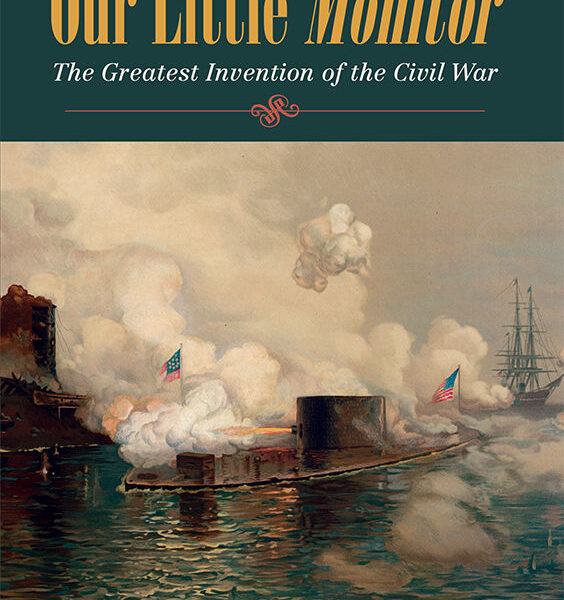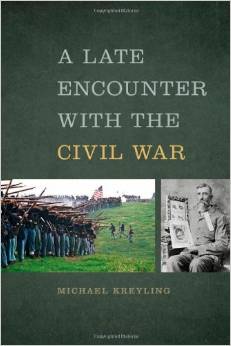Man’s Better Angels: Romantic Reformers and the Coming of the Civil War by Philip F. Gura. Harvard University Press, 2017. Cloth, ISBN: 9780674659544. $29.95.
 Most historians are aware of John Brown, but few are aware that his tumultuous and circuitous route to Harper’s Ferry began with the financial crisis of 1837. Like many Americans, Brown lost both his personal resources as well as his national pride during the panic. For the rest of his life, then, he was on a path for reforming the country so they could avoid future moments of distress.
Most historians are aware of John Brown, but few are aware that his tumultuous and circuitous route to Harper’s Ferry began with the financial crisis of 1837. Like many Americans, Brown lost both his personal resources as well as his national pride during the panic. For the rest of his life, then, he was on a path for reforming the country so they could avoid future moments of distress.
And he was not alone. Philip Gura’s new book, Man’s Better Angels: Romantic Reformers and the Coming of the Civil War, follows the paths of seven reformers during the antebellum period who believed that they knew the remedy for America’s ills. Each chapter is a case study that uses influential characters as a prism through which to view broader concerns. Readers will be exposed to varied and, at times, puzzling opinions from people who otherwise held little in common.
There were two things that bound them all together, however. First was the climactic year of 1837. Prior to that crisis, American faith was triumphant, as many assumed the nation was divinely chosen to march further toward progress every year. But the panic, caused by Andrew Jackson’s fiscal policies, shook that patriotic pride to its core. America in the 1840s seemed to face a crisis in many spheres—economically, socially, religiously, and especially over slavery. Could America survive? Many proposed their own solutions, yet not all of them panned out. Very few of them were even sensible, actually. Gura argues that many of these proposals were mere “pseudoscience, deficient economics, crackpot religion, or dogmatic politics” (13).
A second thread that interwove these romantic reformers was a basic assumption concerning individuals and institutions. Put simply, they refused to acknowledge the systematic problems of the nation, particularly slavery and the financial establishment it buttressed. Instead, they maintained a dogmatic belief in the possibility for personal redemption. All mankind was good, their reasoning insisted, and what was needed was individual transformation. If they could merely teach the correct morals, the American ship could right its course. This is what Emerson called “self-reliance,” and it is a common philosophy attached with American transcendentalism. But as Gura persuasively shows, it was a sentiment that could be found throughout a much broader swath of society.
Gura’s collection of quixotic characters is, on the service, an odd mix: George Ripley, a minister-turned-communitarian, argued that Americans had to be weaned off their addiction to wealth; Horace Greeley, a newspaper editor, and William Green, a religious and economic thinker, proposed financial systems based on European models; the Fowler brothers, Orson and Lorenzo, promoted their odd practice called the “water cure”; Thomas Nichols, whose ideas concerning sexuality shocked his contemporaries; and Henry David Thoreau, who built on Ripley’s critique of capitalism and further tethered it to the institution of slavery. Each chapter displays a depth of research and a subtly of analysis. Even those familiar with Thoreau will learn new things, especially his indictment of Northerners for their inability to solve a Southern problem.
In the end, it was John Brown who embodied the limits of these romantic reformers. Frustrated with the lack of progress achieved by those dedicated to merely winning the minds and hearts of their citizens, Brown recognized that only immediate action could bring an end to national suffering. The Romantic commitment to inner reform could only go so far. Brown, therefore, took action. Though his attempted insurrection failed in the short term, it awakened many of those who previously slumbered. In a fitting conclusion, Thoreau eulogized Brown and heralded him as America’s true prophet. A new fire was ignited.
The “Romantic Reformers,” in the end, proved the limits of their philosophy, rather than its virtue. Americans could be convinced to address their national sin through systematic action: the deaths of hundreds of thousands of citizens on the battlefield. Through their failure, America found its solution.
There are inherent limits with how Gura structured Man’s Better Angels. Viewing the philosophy of “Romantic Reform” through the eyes of six proponents and one dissident provides a particular—and particularly narrow—depiction of the movement. What about other reformers who, though they shared a belief in individual redemption and the divine “spark” of humanity, also understood that such change could only happen at an institutional level? What would this book look like, for instance, if there were chapters on William Lloyd Garrison, Angelina Grimké, or Frederick Douglass? Man’s Better Angelsrequires not these voices, but rather an acknowledgement that these figures offer only one window into a much larger movement. Further, the chapters seem to stand alone without much intersection between them (save for the chapters on Thoreau and Brown), and broader context could have been helpful. The Introduction performs some of this work, but the book could have also used a conclusion to do the same.
But these are, admittedly, forced critiques. Gura is a skilled historian and masterful writer. Man’s Better Angelsprovides cogent deep readings of fascinating characters in very comprehensible prose. At the very least, the book insists that historians do a better job connecting the psychological trauma caused by the Panic of 1837 to the tragic warfare that was the Civil War. It also fleshes out the story of national schism by highlighting the many avenues of potential reform that went unrealized—which, in turn, helps us understand why the war was necessary.
It is impossible to read this book without thinking of the context in which it was produced. Gura wrote this book in the wake of America’s 2008 financial crisis, which made him well attuned to the question of how individuals and institutions can be complicit in national trauma, as well as how competing political opinions can offer different cures. So in a moment where both national political parties seem poised for realignments and self-reflection, Gura’s work can help point us toward the long history of that very dilemma.
Benjamin E. Park is assistant professor of history at Sam Houston State University.




